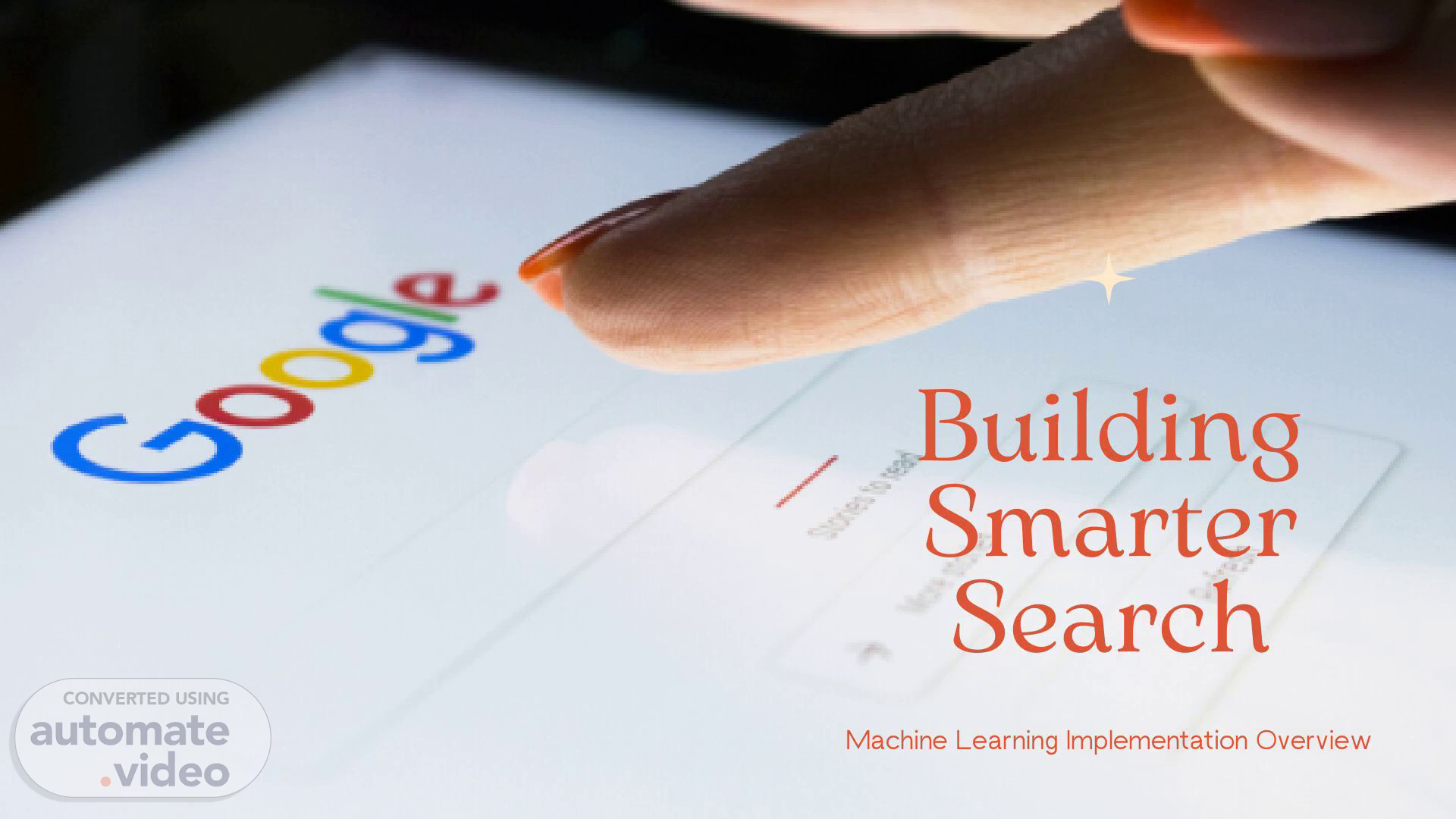
Non Text Magic Studio Magic Design for Presentations L&P
Scene 1 (0s)
[Audio] Building Smarter Search Machine Learning Implementation Overview.
Scene 2 (6s)
[Audio] Building a Search Engine Using Machine Learning Project Guide: B. Prashanth Team Members: Dasoju Tejeshwar 1. Shaik Parvez 2. Banka Praveen Kumar 3..
Scene 3 (19s)
[Audio] 04 ABSTRACT 05 EXISTING SYSTEM LIST OF CONTENTS 06 DOWNSIDES OF EXISTING SYSTEM 08 PROPOSED SYSTEM 10 HARDWARE REQUIREMENTS SOFTWARE REQUIREMENTS 11.
Scene 4 (33s)
[Audio] ABSTRACT The web is the huge and most extravagant wellspring of data. To recover the information from the World Wide Web, Search Engines are commonly utilized. Search engines provide a simple interface for searching for user query and displaying results in the form of the web address of the relevant web page, but using traditional search engines has become very challenging to obtain suitable information. This project proposed a search engine using Machine Learning technique that will give more relevant web pages at top for user queries..
Scene 5 (1m 7s)
[Audio] EXISTING SYSTEM Select websites to search and name your search engine. Can include any websites, not just owned ones. Automated bots (web crawlers or spiders) traverse the internet to discover and index web pages. The collected information is organized and stored in a searchable index. When a user enters a query, the search engine retrieves relevant documents from the index. Search engines played a crucial role in Google's success..
Scene 6 (1m 37s)
[Audio] DOWNSIDES OF EXISTING SYSTEM Keyword-Based Search: Rely on exact keyword matches. Information Overload: Growing volume of data. Difficulty in precise results. Semantic Understanding: Natural language understanding challenges. Adaptability: Difficulty in adapting to user preferences. Lack of personalized results..
Scene 7 (2m 4s)
[Audio] DISADVANTAGES OF TRADITIONAL SEARCH ENGINE.
Scene 8 (2m 10s)
[Audio] PROPOSED SYSTEM. PROPOSED SYSTEM.
Scene 9 (2m 16s)
[Audio] To create a search engine that prioritizes the most relevant web page based on user queries at the top of search results, the primary focus of our system is to enhance accuracy through machine learning techniques compared to existing search engines. Here is a detailed procedure for developing the search engine: Gather data from the World Wide Web using a web crawler. Utilize Natural Language Processing (NLP) for data cleansing. Analyze and compare various page ranking algorithms. Integrate the chosen page ranking algorithm with cutting-edge machine learning technologies. Develop a query engine to efficiently present results for user queries..
Scene 10 (2m 59s)
[Audio] HARDWARE REQUIREMENTS 1 2 Storage: A basic 256GB SSD is sufficient for storing datasets and machine learning models. Processing Power: A modern multicore CPU like Intel Core i5 or Ryzen 5 is recommended for processing power. 3 4 Network: Ensure a stable and reliable internet connection for the network. Graphics Processing Unit (GPU): Using a GPU can enhance machine learning speed. 5 Memory: For optimal performance in machine learning tasks, it is recommended to have a minimum of 8GB of RAM..
Scene 11 (3m 41s)
[Audio] Prepare data using libraries such as Pandas or NLTK. Identify features with scikit-learn. SOFTWARE REQUIREMENTS Develop the model using TensorFlow or PyTorch. Creating a Search Engine Model: Evaluate model performance with tools like scikit-learn. Launch the model with tools like Docker. Gather data with web scraping tools. Sustain the model with version control tools like Git and routine updates..
Scene 12 (4m 11s)
Any Question/ Query?.
Scene 13 (4m 17s)
[Audio] Machinelearningmakessearchbetter,everywhere..